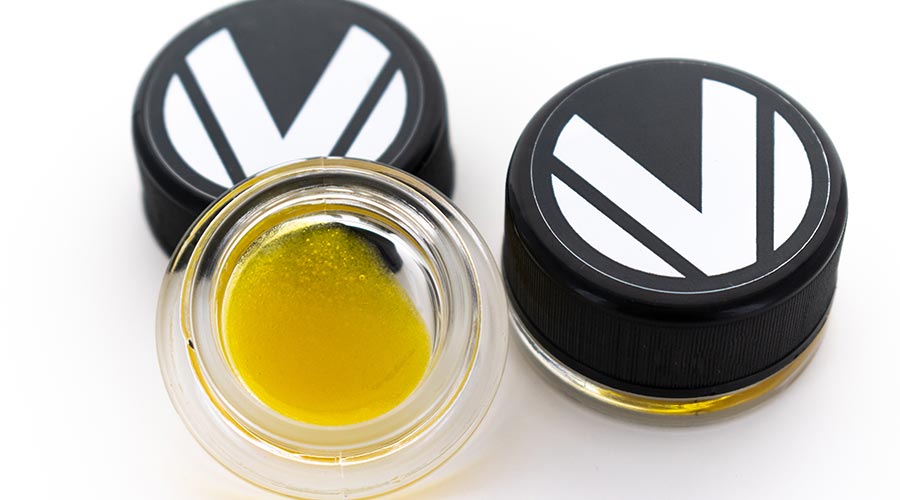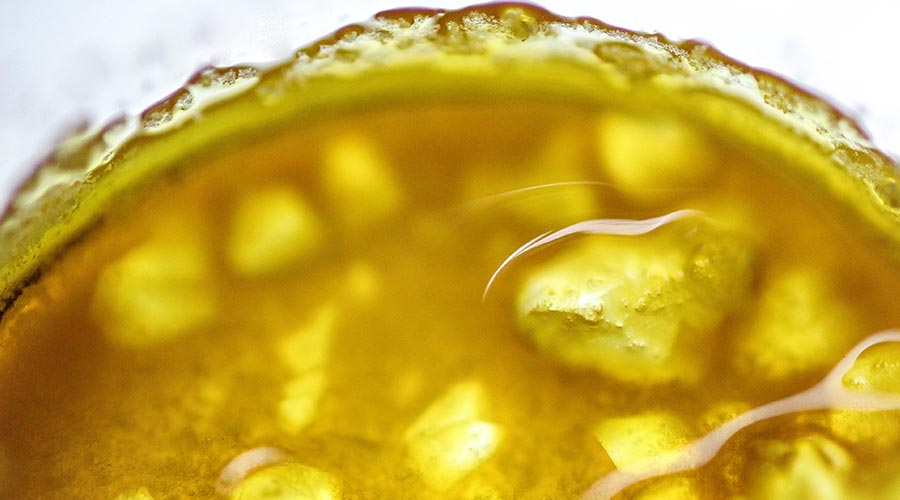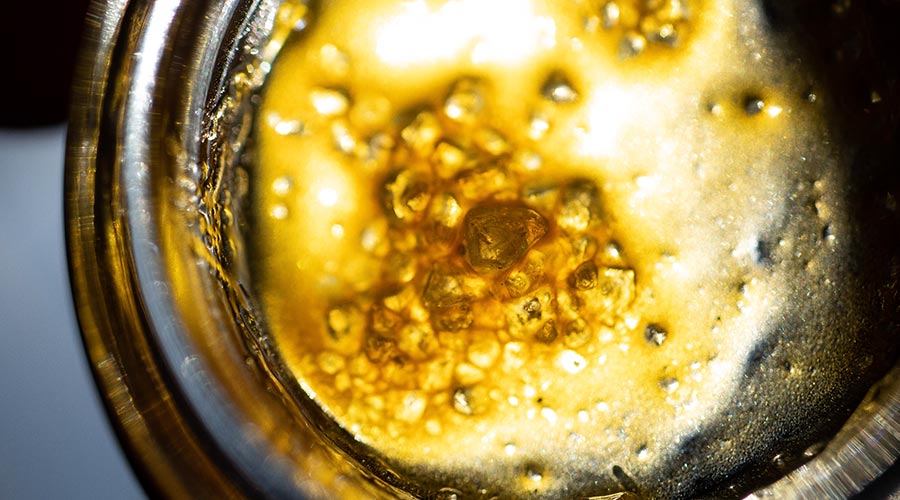Cannabis concentrates are quickly dominating the minds and hearts of discerning cannabis consumers worldwide. Concentrates offer users of all experience levels superior potency, flavor and purity compared to other forms of product types.
If you’re up-to-date with the latest cannabis concentrate trends, you’ve probably heard the term terp sauce being tossed around more frequently than ever. Terp sauce is the industry’s best-kept secret. This relatively new and aromatic type of dab caters to those with a refined terpene palate and strong potency requirements.
What is terp sauce?

Terp sauce
There’s a high likelihood that your nearest dispensary carries some fragrant and amber-hued terp sauce for sale. Essentially, terp sauce is a type of concentrate that has a high concentration of terpenes and crystallized cannabinoid structures.
Terp sauce is a type of high-terpene full-spectrum extract (HTFSE) that is composed of a thick, liquid solution of terpenes and diamond-like formations of cannabinoids, such as THC and CBD. Terp sauce contains a higher percentage of terpenes compared to other concentrates, even live resin.
Terp sauces can contain more than 13 percent terpenes and a range of whole-plant compounds such as cannabinoids and flavonoids. Keep in mind, terpene levels in cannabis flower buds are usually in the low single-digit percentages. Extra terpenes mean a fuller and more complex concentrate smell with terp sauce.
In terms of cannabinoid content, terp sauce doesn’t sacrifice potency for flavor. This runny and gritty concoction can contain about 60 percent cannabinoids, plenty to take users to the moon and back. Terpene concentrations in terp sauce can go up to 40 percent. Terpenes are thought to positively interact with THC, CBD and other cannabinoids for a more pleasant and balanced experience.
Terp sauce isn’t just for those looking for mind-altering effects. Customers can find THC or CBD-rich terp sauces that provide intoxicating and non-intoxicating effects, respectively. Both forms feature a strong aroma, but different cannabinoid levels.
Terp sauce vs. distillate

On the other end of the concentrate spectrum is the versatile distillate oil that can be used in a variety of cannabis products. Its odorless and tasteless form allows manufacturers to infuse it into pre-filled vape cartridges and add flavors or terpenes. These products can contain up to 90 percent THC, but lack the nuance and complexity of the various compounds found in terp sauce.
Terp sauce retains the cannabis strain’s original scent and effects, except in a more concentrated oil. While distillate comes as a clear and viscous oil, terp sauce contains the impressive crystal cannabinoids. Terp sauce can be consumed in a traditional glass dab rig.
Solvent-based extraction
Terp sauce, like many other common concentrates types such as shatter and wax, is made using a closed-loop extraction process that separates the full-spectrum of chemical compounds in the cannabis plant from the plant’s harsh-tasting chlorophyll, lipids and waxes.
Manufacturers prefer to start with fresh frozen cannabis buds instead of trim, shake or other low-cannabinoid material. Frozen cannabis buds preserve the plant’s peak trichome levels, thereby providing users with more cannabinoids and terpenes in the final product.
A variety of solvents can be used to extract the full-spectrum compounds, but the most common terp sauce extraction methods use hydrocarbons such as propane and butane, or a mix of both. Propane and butane have low boiling points that help preserve, not degrade, the temperature-sensitive terpenes from the oil.
The closed-loop extraction process produces a cannabis oil that requires post-processing to remove residual solvents and form crystal diamonds and terp liquid. When making terp sauce, extraction technicians put the terp sauce solution in a low-temperature purge to evaporate the trapped solvent from the resin.
Once enough solvent has been removed, extraction operators place their terp sauce mixture in an airtight mason jar and let it stand in a cool, dry and dark place for a few weeks or longer to undergo a natural separation process. Regular monitoring ensures large diamonds and runny terp syrup is produced.
How to consume terp sauce

While terp sauce may be a relatively new product on the market, the tools needed to consume it are widely available, easy to use and affordable. Novice users can invest in a small glass dab rig, torch, dabber and carb cap to get the pure terp flavor at a budget-friendly price.
Upgrade your dabbing sessions with a collection of terp pearls that distribute the terp sauce throughout the nail for more effective and consistent heating. For a more streamlined and effective dabbing method, dab terp sauce in an electronic dab rig. E-rigs function with e-nails that can maintain a consistent nail temperature so you can reap the terp sauce’s maximum flavor and potency.
Dabbing temperatures are a big factor in consuming terp sauce in the most effective way. Because terpenes degrade at a lower temperature than major cannabinoids, low dabbing temperatures are needed. Precise temperature control capabilities enable users to vaporize terpenes and taste the difference.
Terp sauce is a full-spectrum extract that offers numerous benefits to a variety of cannabis consumers. Its whole-plant chemical profile enables connoisseurs to try a strain’s essence. Some medical users experience an improvement in condition with the extract’s synergistic effects due to the range of bioavailable compounds. Ultimately, terp sauce is a new and exciting concentrate that comes in both intoxicating and non-intoxicating forms for easy consumption.


Leave A Comment